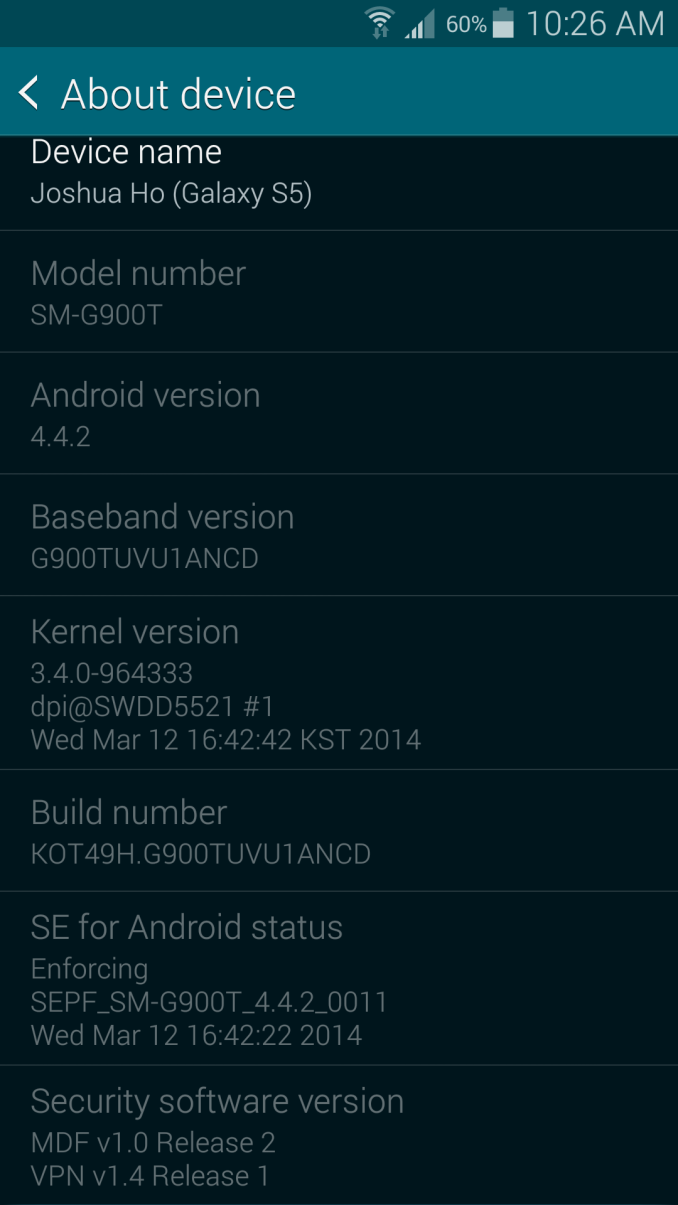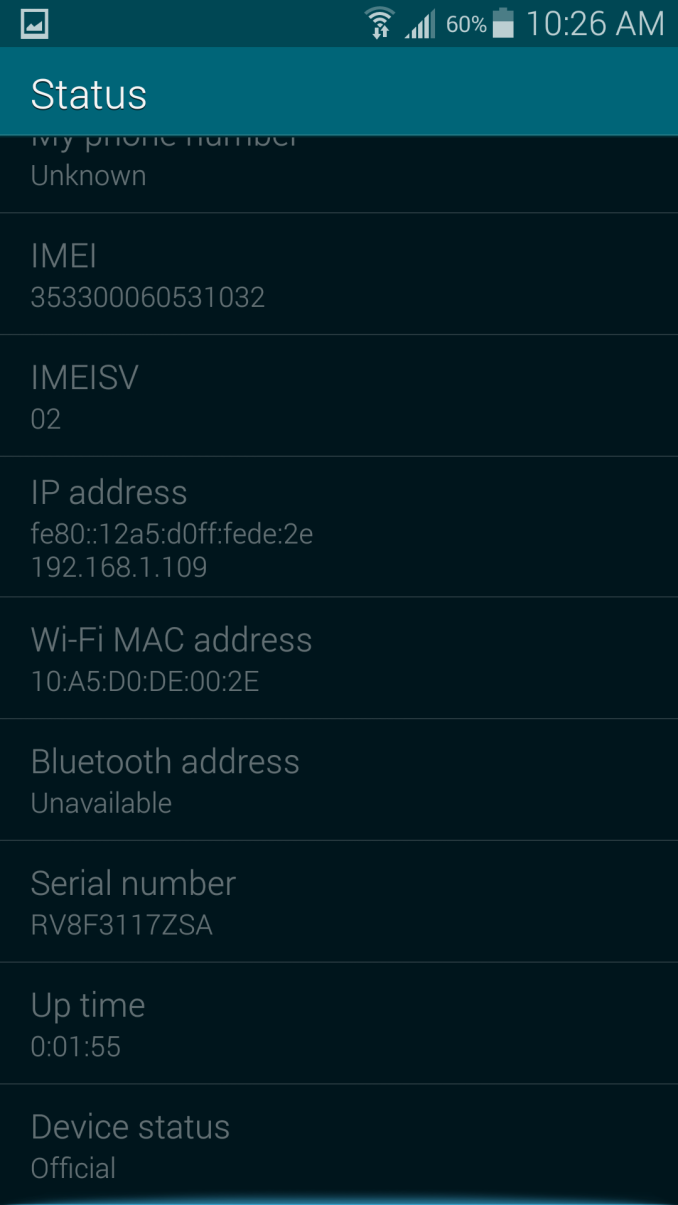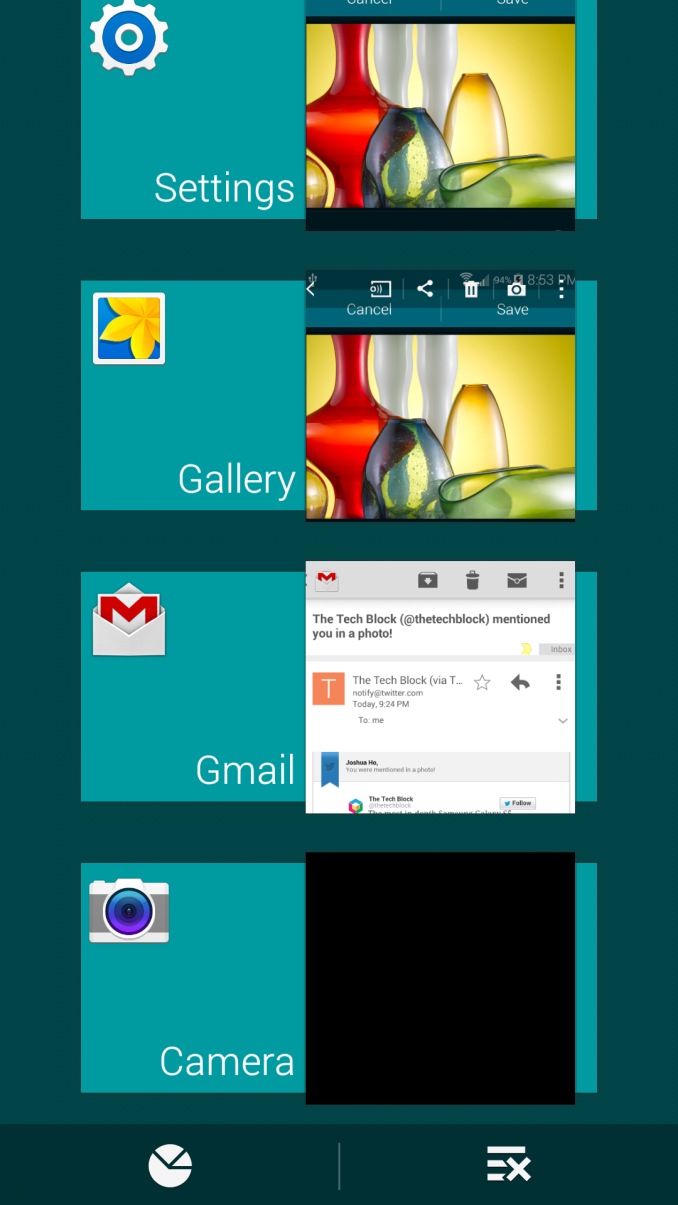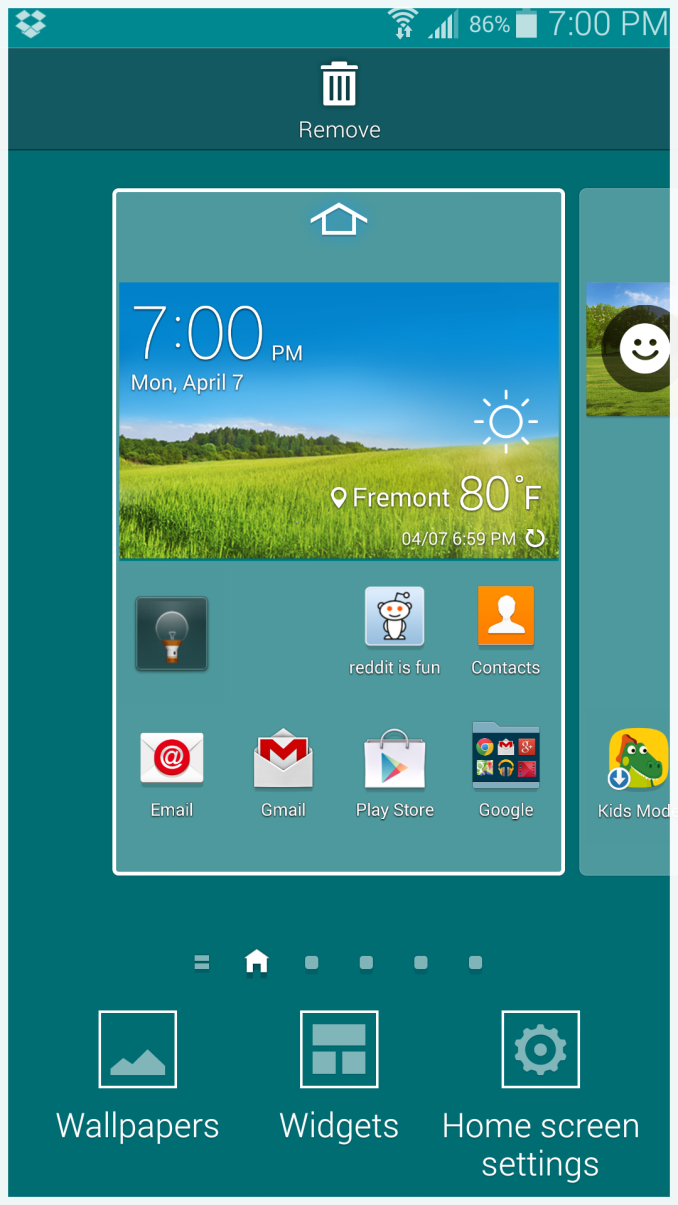Samsung Galaxy S 5 Review
by Anand Lal Shimpi & Joshua Ho on April 8, 2014 12:00 AM EST- Posted in
- Smartphones
- Samsung
- Mobile
- Galaxy S 5
Software: KNOX & TouchWiz
Around a year ago, Samsung announced SAFE with KNOX, which was effectively Samsung’s attempt to enter the Enterprise sector that BlackBerry and Apple were dominating. This announcement was effectively ignored, but it set the tone for things to come. With the Galaxy S4, at launch it was effectively untouched by these new policies outside of SEAndroid enforcement. However, as 2013 progressed, we began to see the true effects of Samsung’s attempt to gain ground in the BYOD space, as the Note 3 was the first Android phone to have a Knox warranty void QFuse that would lock out any KNOX features if tripped by unsigned software loaded into the system partition or any other partition that had signature checking enabled. This isn’t unusual for Samsung as they have had warranty void flags before, but what was truly exceptional was that this leveraged a QFuse, which makes it impossible to revert the warranty void flag if tripped, because QFuses are physically modified on the SoC rather than on a file in random partition on the eMMC device.
The next noticeable step was when the Galaxy S4 received an OTA update that enabled such behavior as well, and not only did it add the KNOX warranty void flag, it also would make it impossible to downgrade the firmware, which was likely done for security reasons and any attempt to do so would trip the warranty void flag.
With the Galaxy S5, KNOX has finally come full circle, as all US carrier variants are shipping with a locked bootloader. While it’s true that some variants of the Galaxy S4 had a locked bootloader, it wasn’t quite indicative of a real trend, as both AT&T and Verizon are well known for their bootloader locking policies and will often place such a requirement in their RFPs for a new device. On the other hand, Sprint and T-Mobile US are generally accepted as less stringent in their policies for rooted devices. In short, you cannot flash a custom ROM the same way that you could on the Galaxy S4 with an unlocked bootloader.
Update: Based upon recent events the Sprint and TMOUS variants both have an unlocked bootloaders, despite statements to the contrary.
Based upon my own cursory examination, the Galaxy S5 has SEAndroid active, and also has the warranty void flag, although I can’t find any evidence within the system that the Galaxy S5 has a locked bootloader. The AT&T and Verizon versions still retain the locked bootloader, and they don't have any outward indication of such a bootloader lock.
Quibbles with the Knox flag aside, Samsung truly has improved TouchWiz. I’m happy to say that they have finally added some level of aesthetic cohesiveness and just about every major application that I tried was noticeably better than before. Previous pain points such as the horrific tab view that effectively made the settings menu impossible to navigate without frustration, the stuttery launcher, and difficult keyboard have been fixed. The keyboard is now usable, and with Swiftkey’s prediction engine, I don’t actually feel a strong need to immediately replace the keyboard, although I still prefer SwiftKey due to its rather cramped layout from the very large spaces that Samsung has put between the keys, which means the spacebar is incredibly small. The launcher is now smoother than the one I used in TouchWiz 4 on the Galaxy S2, and the settings menu has a much more tolerable grid view by default, although I still find myself preferring the list view, which is thankfully also an option.
Even the simplest things have been changed dramatically for the better. The multitasking menu as seen below is much cleaner in its aesthetics, and the email application (as seen above) finally looks like it was made for Android 4.0 and newer rather than a port of an email application made for Gingerbread/Android 2.3.
However, in some ways TouchWiz takes a step back. There is still quite a bit of inconsistency with their icon design as some icons retain the old rectangular format while others gain the new circle design and the new launcher. Although the launcher is now smooth and clean in its aesthetics, there's a new homescreen called My Magazine, as seen above. Samsung emulates HTC's BlinkFeed down to the placement of it, which is the left-most homescreen. Unlike BlinkFeed though, it is noticeably more limited in functionality as only a few selected topics can be added with no custom RSS feed capability and it can only show one article from each topic at a glance, rather than providing a feed that can scroll infinitely if desired. Trying to look at more than one article requires going straight into FlipBoard, which seems to be the application that drives My Magazine. It’s also quite clear that My Magazine is separate from the home screen because the multitasking menu shows it as a discrete application, and swiping back from the application has a noticeable lag compared to swiping on the homescreens. On the bright side, this can be disabled by going into the home screen settings menu, which is conveniently accessed by pinching on a homescreen to enter the helicopter view, which activates the home screen edit mode. This new view doesn’t display all the screens at once, rather it provides a card view of sorts that the user can swipe left and right upon to view all of the homescreens as seen below.
If this sounds familiar, that’s because it is. This is quite literally the exact same way that one accesses the home screen edit mode for Sense 5 and 6 on HTC devices. Even the widget panel has been moved from the application drawer to this display.
Samsung has finally brought their user interface up to date, and while there are still improvements to be made (e.g. bringing up the multitasking UI takes way too long), I finally no longer feel like TouchWiz is a negative to Galaxy phones.
















296 Comments
View All Comments
darwinosx - Tuesday, April 8, 2014 - link
Huh? No weak points? The lousy camera, speakerphone and build quality?LakerHater - Wednesday, April 9, 2014 - link
I disagree, the LG G2 is the same as the Nexus or even better in some areas (camera, battery). Plus, I can always switch to the Google Now Launcher if I want stock android look.goobersnatcher - Thursday, April 10, 2014 - link
Great phone ....by the way. Can get it for a little over $400.00. The G2 can do it all! :)nos024 - Thursday, April 10, 2014 - link
Wow...you just called out all the apple users out there basically.max1001 - Thursday, April 10, 2014 - link
So you are telling me you judge an ui lag base on 23 fps youtube video? That's like measuring a rocket speed using a radar gun that max out at 60 mph. .pjcamp - Friday, July 4, 2014 - link
I made one change to my Galaxy S3. I replaced the stock ROM with Cyanogenmod 11. Stuttering and crashes went away. Agreed -- Touchwiz is the weak point for Samsung and always has been.sabot00 - Tuesday, April 8, 2014 - link
Rather unfortunate to see very incremental changes lately. Both the new HTC One and the GS5 are small evolutions.BedfordTim - Tuesday, April 8, 2014 - link
Agreed, but as xsoft7 has pointed out Samsung has a way of making the change seem bigger than it is.Personally I would have liked to see the power button moved so you don't press it when you pick up the phone.
hlovatt - Tuesday, April 8, 2014 - link
Disappointing upgrade, the Galaxy Ho Hum :)Netscorer - Tuesday, April 8, 2014 - link
Just wondering - what did Samsung missed out in your opinion? I thought their battery life is phenomenal, camera is improved, new features (finger scan, heart rate, etc.) are evident. To me the only lacking feature is absence of Qi wireless charging out of the box. Other then that they have a very appealing phone.